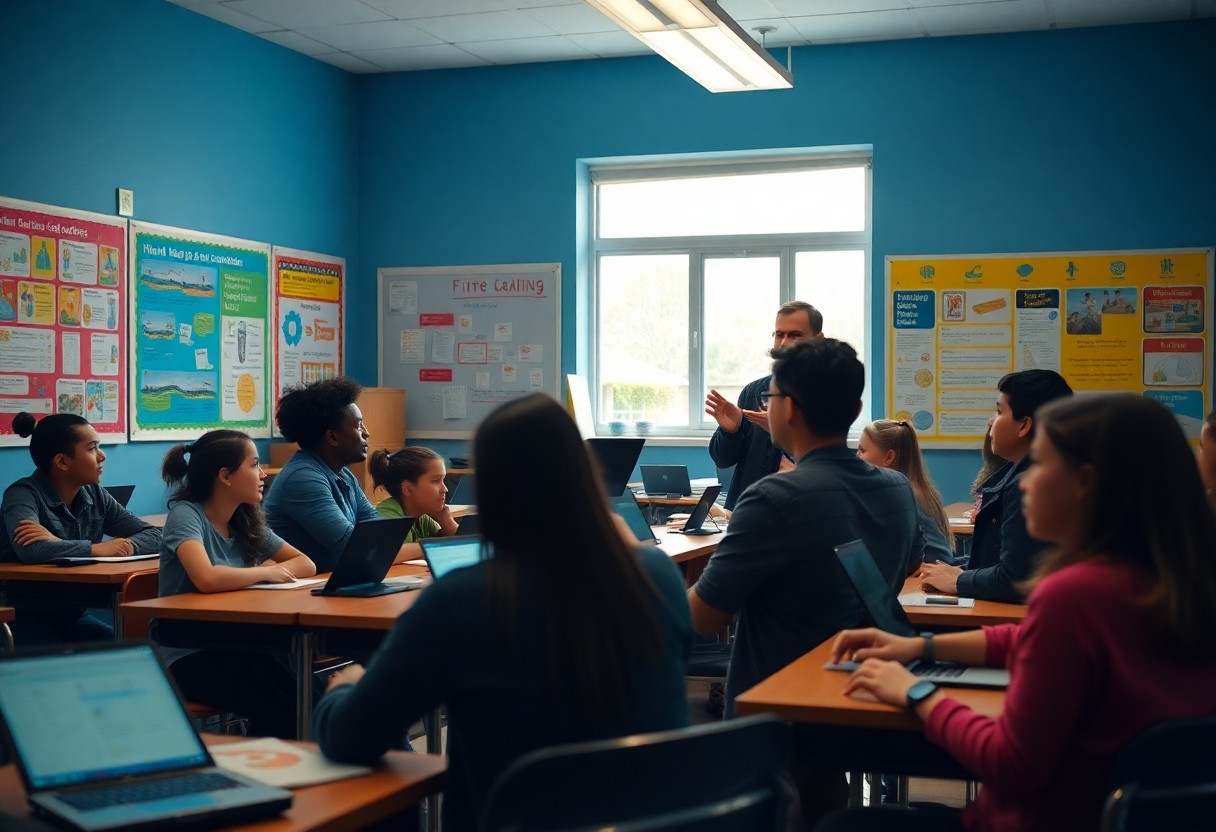Engagement in learning can often be a challenge, but understanding student motivation strategies can significantly enhance your students’ participation and enthusiasm. By implementing effective techniques such as goal-setting, providing meaningful feedback, and fostering a supportive classroom environment, you can transform the educational experience. This blog post will explore various strategies that not only spark interest but also encourage your students to take an active role in their learning journey. Discover how you can create a dynamic classroom atmosphere that promotes engagement and retention of knowledge.
Understanding Student Motivation
While student motivation plays a pivotal role in educational success, it encompasses a myriad of factors that can vary greatly among individuals. Understanding what drives motivation in students allows educators and institutions to create tailored strategies that foster greater engagement and improve academic outcomes. By recognizing these motivational dynamics, you can better support your students on their educational journey.
Theories of Motivation
Student motivation is often analyzed through various psychological theories. These theories, such as Maslow’s Hierarchy of Needs and Self-Determination Theory, provide frameworks that help understand how students’ internal drives and external factors impact their desire to learn. By applying these theories, you can better assess what influences your students and how you can enhance their learning experiences.
Factors Influencing Student Engagement
Behind effective engagement lies a multitude of factors that shape students’ learning experiences. These can include personal interests, learning environments, social interactions, and the relevance of the material to their lives. By addressing these factors, you can foster a more engaging and motivating educational setting that resonates with your students’ needs. Consider the following factors:
- Intrinsic and extrinsic motivation levels
- Quality of teacher-student relationships
- Opportunities for autonomy and choice
- Relevance of content to real-world scenarios
Any efforts to enhance engagement should consider these influencing factors to create a more effective learning environment.
Motivation thrives in a supportive and responsive atmosphere, where the needs and preferences of students are prioritized. Recognizing what drives engagement can greatly impact your approach to teaching. Factors that may affect engagement include:
- Clear goals and expectations
- Access to resources and support
- Peer collaboration and interaction
- Feedback and recognition
Any initiative to foster student engagement must take into account how these factors interconnect with their motivation to learn.
Overview of Student Motivation Strategies
It is necessary to explore various student motivation strategies that can effectively enhance engagement in educational settings. These strategies can encompass different aspects of the learning environment, teaching methods, and emotional support structures. By implementing a mix of techniques tailored to individual needs, you can create a more stimulating experience that fosters enthusiasm and commitment towards academic success.
Intrinsic vs. Extrinsic Motivation
At its core, intrinsic motivation involves engaging in an activity for its own sake, driven by personal satisfaction and interest, while extrinsic motivation stems from external rewards or pressures. Understanding the balance between these two motivational forces is necessary for you to tailor approaches that resonate with students’ personal goals and values, ultimately enhancing their engagement in the learning process.
Goal Setting and Achievement
On the topic of goal setting, establishing clear, achievable goals can significantly impact student motivation and engagement. When students know what they are working toward and can track their progress, they are more likely to feel a sense of accomplishment and purpose in their studies.
Another key aspect of goal setting is the SMART criteria—goals should be Specific, Measurable, Achievable, Relevant, and Time-bound. By setting SMART goals, you can help students focus on not just completing tasks, but achieving meaningful milestones that reflect their progress. This structured approach encourages a sense of ownership, promotes persistence, and cultivates deeper engagement with learning materials, fostering a more sustained academic interest over time.
Assessing the Impact of Motivation Strategies
Now, evaluating the effectiveness of various student motivation strategies is fundamental in determining their impact on engagement levels. By systematically analyzing these approaches, you can better understand how well they resonate with your students and which methods yield the best results. This assessment will provide you with insights into refining your techniques, ultimately enhancing the learning experience in your classroom.
Quantitative Measures
Between standardized tests, attendance rates, and participation metrics, quantitative measures provide clear data to evaluate the success of motivation strategies. Utilizing these metrics allows you to gauge student engagement levels and identify patterns over time. Understanding these numbers helps you to make informed decisions to enhance your teaching practices.
Qualitative Insights
Above quantitative measures, qualitative insights can reveal deeper emotional and psychological impacts of motivation strategies on your students. Gathering feedback through surveys, interviews, or focus groups sheds light on students’ perceptions and experiences, offering valuable information on how they feel about their engagement in learning.
This qualitative approach can uncover nuances that numbers alone may not capture. You might learn about the specific aspects of motivation strategies that resonate with students, allowing you to tailor your methods to meet their needs better. This depth of understanding can lead to more effective engagement practices, fostering a stimulating academic environment that inspires students to take ownership of their learning.

Case Studies in Effective Motivation
To explore the impact of motivation strategies, consider the following case studies that illustrate their effectiveness in boosting student engagement:
- 1. A 2018 study at Lincoln High found a 30% increase in attendance after implementing peer mentoring programs.
- 2. At Maplewood Academy, gamified learning led to a 25% rise in student participation in science classes.
- 3. The “Goal Setting” initiative at River View Middle resulted in a 40% improvement in academic performance over two semesters.
- 4. A college’s research on intrinsic motivation revealed a 50% decrease in dropout rates when students took ownership of their learning paths.
Successful Programs and Interventions
Beside showcasing statistics, effective programs often incorporate strategies tailored to meet diverse student needs, enhancing engagement across various demographics. Programs emphasizing student autonomy and collaboration consistently show positive outcomes.
Lessons Learned
Interventions that leverage student interests and strengths are typically more effective in fostering engagement. Providing opportunities for choice and voice can significantly impact students’ motivation levels.
With these insights, you can design initiatives that prioritize student preferences and learning styles. Engaging them in the decision-making process invites ownership of their education, driving a culture of intrinsic motivation. Furthermore, analyzing the successful elements of these interventions can guide you in replicating their success in your educational environment.
Challenges in Implementing Strategies
Despite the undeniable benefits of student motivation strategies, you may encounter various challenges in their implementation. Factors such as inadequate training for educators, lack of resources, and the diverse needs of students can hinder your ability to effectively engage learners. Identifying and overcoming these obstacles is vital to creating a more motivated and participatory classroom environment.
Resistance to Change
By introducing new motivation strategies, you might face resistance from both students and colleagues. Many individuals are accustomed to traditional teaching methods and may be skeptical of new approaches. This resistance can lead to a lack of buy-in, ultimately affecting the overall effectiveness of the strategies you wish to implement.
Individual Differences Among Students
Individual differences among students can also present significant hurdles when applying motivation strategies. Each student brings unique backgrounds, learning styles, and interests to the classroom, which can make it difficult for you to develop a one-size-fits-all approach. Recognizing these differences helps you tailor your strategies more effectively.
Indeed, acknowledging individual differences is vital for fostering an inclusive learning environment. You need to utilize varied motivational techniques that cater to diverse preferences, such as incorporating technology for tech-savvy learners or hands-on activities for those who thrive in experiential settings. Balancing these variations can enhance engagement and help you meet the unique needs of each student, ultimately boosting their motivation and participation in the classroom.
Future Directions in Student Engagement
Once again, the landscape of student engagement is evolving, as educators explore innovative strategies to motivate learners. This shift invites you to stay informed about the latest practices and research, ensuring your approaches remain relevant and effective. By prioritizing student agency and personalized learning experiences, you can enhance engagement and foster a deeper connection between students and their academic pursuits.
Innovations in Motivational Techniques
Motivational techniques are continuously advancing, enabling educators to implement more effective strategies. You can explore gamification, project-based learning, and personalized feedback to drive engagement. By integrating these innovative methods, you can create a more dynamic classroom environment that resonates with your students’ interests and learning styles.
The Role of Technology
Beside traditional teaching methods, technology plays an integral role in enhancing student motivation. You are encouraged to utilize digital tools and platforms that facilitate collaboration, instant feedback, and interactive learning experiences. This integration can lead to increased engagement and motivation among your students.
Another aspect of technology’s role is its capacity to create personalized learning experiences. Many platforms enable you to tailor content and pace to meet individual student needs. By leveraging data analytics, you can identify trends in student behavior and performance, allowing you to adapt your strategies promptly. This proactive approach not only boosts motivation but also empowers students to take ownership of their learning journey.
Final Words
With these considerations, you can appreciate the significant impact that student motivation strategies have on boosting engagement in educational settings. By implementing tailored approaches, such as goal setting and positive reinforcement, you can enhance your students’ intrinsic motivation, leading to more active participation and improved academic outcomes. Engaging students is not just about maintaining interest; it’s about fostering a learning environment where they feel valued and inspired to contribute. As you employ these strategies, you’ll likely notice a marked difference in both engagement levels and overall learning experiences.
FAQ
Q: What are student motivation strategies, and how do they impact engagement?
A: Student motivation strategies encompass various techniques aimed at increasing learners’ interest, enthusiasm, and commitment toward their educational activities. These strategies may include goal setting, providing positive reinforcement, fostering a supportive learning environment, and incorporating relevant and engaging materials. By enhancing students’ motivation, these approaches can lead to higher levels of participation, improved performance, and a more positive attitude toward learning, ultimately boosting overall engagement in educational settings.
Q: What role does the teacher play in implementing motivation strategies?
A: Teachers are pivotal in the success of motivation strategies. They can create an atmosphere that encourages curiosity and initiative by being approachable, understanding individual student needs, and adapting teaching practices accordingly. Effective educators often use a mix of instructional methods, active learning opportunities, and personalized feedback to sustain motivation high among students. Their ability to connect with students personally and professionally can significantly influence how motivated students feel, fostering a classroom environment where engagement flourishes.
Q: How can technology enhance student motivation and engagement?
A: Technology can play a significant role in enhancing student motivation and engagement by providing interactive and personalized learning experiences. Tools like educational games, online discussion forums, and multimedia resources can make learning more enjoyable and relatable. Additionally, technology enables students to track their progress, set personal goals, and receive immediate feedback, which can further boost motivation levels. When used thoughtfully, technology serves as a powerful means to create dynamic and engaging learning environments that cater to diverse learning styles.




0 Comments